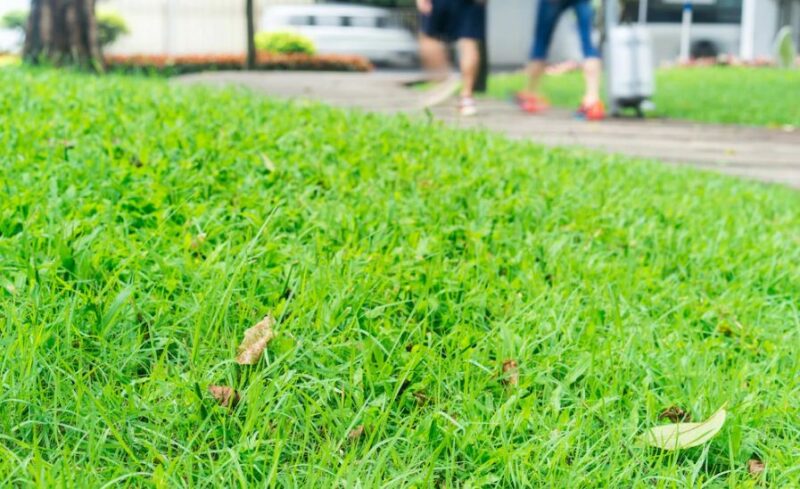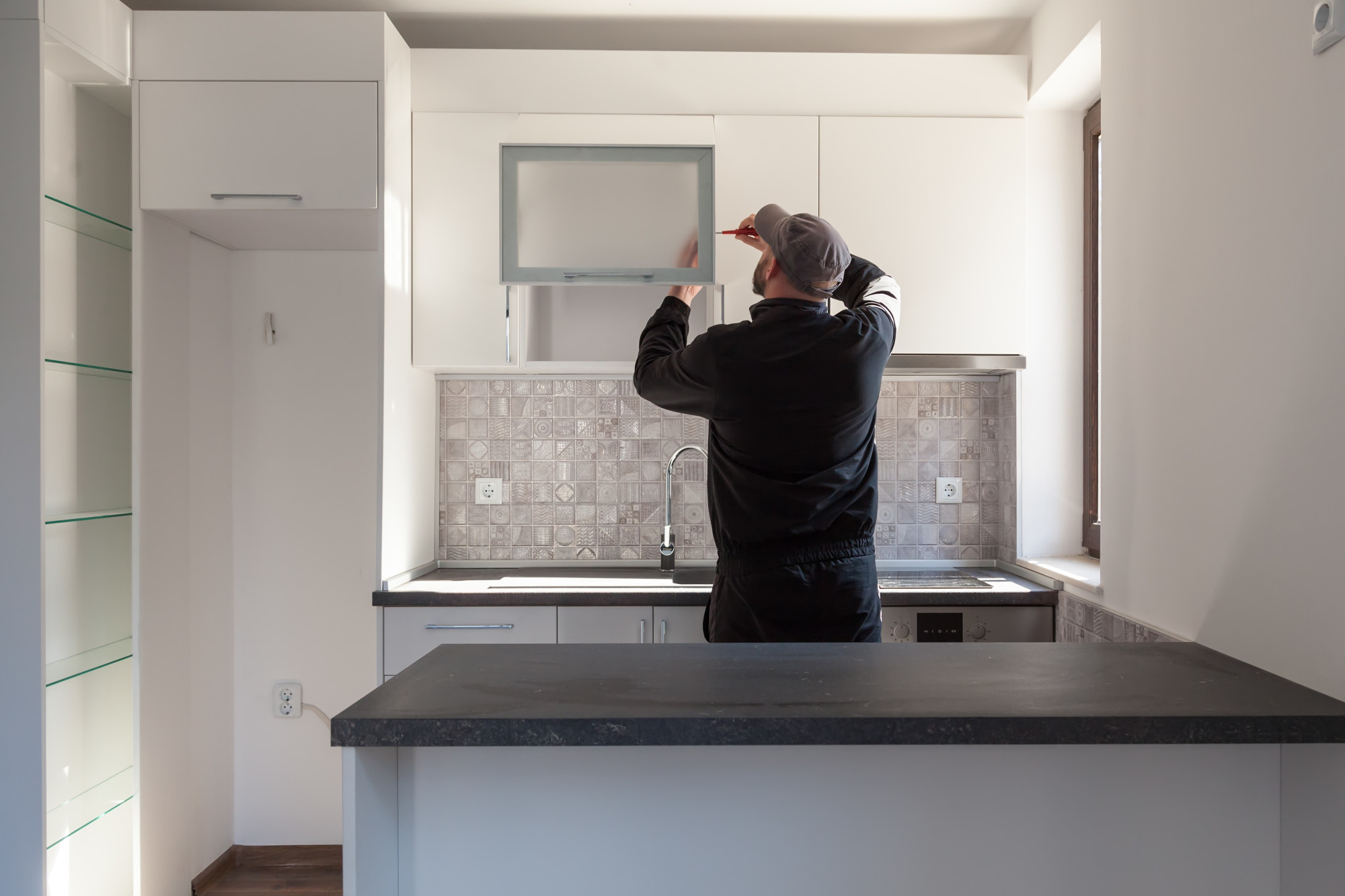Are you sure your lawn is crabgrass free?
Crabgrass is one of the more insidious lawn weeds, as it can take over an entire area in only a matter of months. It grows quickly, is hard to spot on first inspection, and can be more difficult to get rid of than other, more familiar types of weeds.
If you switch lawn care services, you may be particularly concerned that it will return with a vengeance. This article will explain what crabgrass looks like and what to do if you can’t get rid of crabgrass in your yard.
Identifying Crabgrass on Your Lawn
Identifying crabgrass can be a tricky task. Crabgrass is a short-lived annual grass that usually germinates in the spring and sets its seeds in the fall. It often goes undetected until it has taken over a large portion of the lawn.
It grows low to the ground, with broad blades, and typically has a red or purple tint to it. It is usually found along the edges of walks and driveways, in neglected or overfertilized lawns, and in clay or sandy soil.
To identify crabgrass, look for low-growing, coarse, thick, light-green patches in turf. It spreads in clumps and has prominent off-center midribs on the leaflets. A close examination of the crabgrass will reveal an often-overlooked seedhead that protrudes above the foliage.
To be sure, dig around the suspected stand of crabgrass and try to remove the root system. Crabgrass can be hard to get rid of, so identifying it early when it is in small patches is key to avoiding a takeover of your lawn.
Managing Your Lawn to Achieve Ultimate Crabgrass Prevention
Managing your lawn to achieve ultimate crabgrass prevention is an essential part of maintaining a lush, healthy lawn. The good news is that you can get rid of crabgrass in your lawn with an integrated approach involving both pre- and post-emergence weed control.
First, scout for areas with existing crabgrass. Take steps to reduce crabgrass germination and spread. This can involve cutting the grass with a sharp blade and raising the mowing height to encourage beneficial grasses.
Choose the Right Tools
To get rid of crabgrass in your lawn, you first need to choose the right tools. A mower with a sharp, high-quality blade is important for achieving the best results.
Additionally, use an edger to clean up any remaining crabgrass. From along sidewalks, driveways, and other hardscapes. You’ll also need a lawn aeration tool to loosen the soil and balance the pH of your lawn.
You’ll need a broad-spectrum herbicide to effectively control crabgrass. It’s important to choose a pre-emergence herbicide to get rid of crabgrass before it can sprout. You’ll also need to use a post-emergence herbicide to kill crabgrass after it has sprouted.
With the right tools and proper application techniques, you can kill off existing crabgrass and prevent new growth in the future. When selecting tools for your lawn and garden, be sure to read the label on each product and select the one that is best suited to your needs.
Mow Your Lawn Regularly and Properly
Mowing your lawn regularly is a key step to getting rid of crabgrass in your yard. You should mow at the proper height.
As soon as you see the grass getting around three inches tall, mow your lawn, as it prevents crabgrass from maturing and producing seeds. When you mow too short, it opens up turf grass to competition from other weeds and crabgrass. This helps reduce the infestation as it keeps the turf grass thick and healthy.
Mowing will help rid your lawn of crabgrass by stopping the cycle that harms your lawn. Mow your lawn weekly to keep it at a healthy height of two to three inches, which means going over the same area at least two or three times.
If crabgrass is already established, it is best to set the mower to its highest setting and then gradually lower it when the crabgrass dies away. Be sure to regularly rake or sweep away the clippings, as these can accumulate and hinder new growth.
A lawn mower with a mulching blade will help even the lawn and reduce crabgrass, preventing it from coming back. The more uniform and straight your grass is mowed, the less likely it is to be susceptible to crabgrass. Keeping up with routinely mowing your lawn can give you the best chance of getting rid of crabgrass.
Choosing the Right Herbicides to Combat Crabgrass
Herbicides are one of the simplest ways to get rid of crabgrass in your lawn. There are many different options when selecting which herbicide to use.
First, read the label and follow any instructions given. It’s important to use a product that is formulated for your lawn type and the type of weed you’re trying to combat.
If you’re unsure of which product to use, consult with a professional. If you already have existing turf, then an organic or non-selective herbicide can be used to spot-treat the crabgrass.
After selecting the right product, apply it in late spring or early fall when the crabgrass is at its peak. Keep an eye on the temperature, as most herbicides are ineffective at temperatures below 50 degrees Fahrenheit.
Finally, use the recommended amount of product with caution and avoid overapplication. This can damage other grasses and plants. With the proper application of the correct product, getting rid of crabgrass in your lawn is a much simpler process.
Implementing Best Practices for Pre-emergent Weed Control
To get rid of crabgrass in your lawn, implementing best practices for pre-emergent weed control is the best approach. This should begin in early spring, before the onset of growth, by applying a pre-emergent herbicide to the lawn. This will prevent the early germination of shoots.
Preparing the area by removing debris and raking the soil is essential before applying the pre-emergent. When applying the herbicide, the soil should be moist but not soggy, and the herbicide should be lightly watered in after application.
Follow-up applications may be necessary throughout the growing season. Aside from the chemical treatment, removing the crabgrass throughout the season is also important.
For larger areas, mechanical tools such as raking, digging, or hoeing will help. Lastly, lawns can benefit from intermittent mowing. This will limit the amount of light and water the crabgrass can access, reducing its presence.
Feed Your Grass: Regularly Apply Fertilizer
Crabgrass is an unsightly weed affecting lawns across the country. Taking time to understand the benefits of regular fertilizer applications is important to keep your lawn looking its best.
Fertilizers promote strong and healthy grass, helping it to crowd out and choke out crabgrass. Apply fertilizer at different times of the year, following the types of grass that grow in your particular area.
A committed effort and regular application of the right fertilizers are key to keeping crabgrass out of your lawn. It will take time and patience, but with an ongoing focus on fertilization and weed control, you can reduce the amount of crabgrass in your lawn.
Deep Water! Do Not Overwater
Deep watering your lawn is the best way to get rid of crabgrass. It is important to keep the root system of your lawn healthy and vigorous so it can outcompete weed growth.
Crabgrass needs consistent moisture, and by deep watering, you are cutting off its source of moisture and killing it off. When it comes to deep watering, it is important to saturate the soil to a certain depth.
Also, deep watering should be done less than shallow watering—2–3 times per week rather than daily. With this deep watering schedule, the water will reach and nourish the root system and also discourage weed growth.
You should also avoid splashing water onto the crabgrass, where it will receive extra moisture, fungi, and disease. Remember, deep watering is more important than overwatering to get rid of crabgrass and maintain a healthy lawn.
Make Your Irrigation System Efficient
One of the most effective ways to get rid of crabgrass on your lawn is to make your irrigation system more efficient. Crabgrass is a type of weed that thrives in moist environments. Active irrigation can keep the soil dry and less conducive to crabgrass invasion.
With an efficient irrigation system in place, you can ensure that your lawn remains dry, which will make it harder for crabgrass to take root and spread throughout your lawn. Additionally, proper irrigation practices can help reduce the amount of water wasted, saving you money in the long run.
Lawn Care Services: Choosing the Best Ally
A lawn care service provider can help you keep a healthy lawn by regularly watering it and inspecting it for signs of infestation. They can also help you treat your lawn by implementing crabgrass preventatives to create a barrier against the seedlings and enrich the existing lawn to minimize any crabgrass growth.
They can identify the problem, and they will provide you with best-in-class services to help you maintain the quality of your lawn that you desire. They may also offer specialized services with organic treatments and eco-friendly products.
Lawn Care Services will apply granulated fertilizer to your lawn, which will replace the nutrients that were lost from the crabgrass removal. Proper lawn care is best executed by experts, especially the reliable professionals at DTL Total Turf Care. Getting rid of crabgrass in your yard is a process, but with the help of a lawn care service, it is possible.
How Proper Lawn Care Will Benefit You
Maintaining proper lawn care is a great way to get rid of crabgrass and benefit you as a homeowner. Proper lawn care includes mowing your lawn often, at least once a week, to prevent the weed from taking over.
It also includes applying a pre-emergent, or crabgrass preventer to your lawn in early spring or late fall before temperatures start to drop and then again in two to three months.
Fertilizer will help your lawn stay thick and healthy, reducing the amount of space for the weed to take root. Keeping your lawn watered keeps your grass strong and helps keep crabgrass away.
Additionally, spot-treating with an herbicide is also effective when dealing with large infestations. Doing these simple lawn maintenance steps can help you maintain a healthy lawn and will benefit you in both the short and long term.
Proper lawn care has many benefits for you, your family, and your home. It will promote a healthier and better-looking lawn, reduce issues like pests and weeds, and save you money in the long run. For example, having a thick and healthy lawn will help reduce the weed population since it has more nutrients and competes with weeds for resources.
Regularly trimming and edging your lawn will also ensure a neat appearance, providing a better first impression to visitors, neighbors, and potential home buyers.
Finally, taking the time to properly fertilize and water your lawn regularly will save you money in the long run. Fertilizer will help your lawn stay thick and healthy, reducing the amount of space for the weed to take root. It reduces the need for costly treatments and repairs.
When it comes to lawn care, investing time and energy pays off!
Get Rid of Crabgrass To Keep Your Lawn Healthy
Crabgrass is a nuisance on any lawn, but taking the steps above can help restore your lawn and get rid of crabgrass. Follow up on your initial treatment with preventive measures, such as aeration or adding a pre-emergent to your lawn.
With dedication and consistency, you can get rid of this weed and finally have a clean and healthy lawn. Call your local lawn care professional today to get started!
If you think this article is helpful, check out our other blogs!









